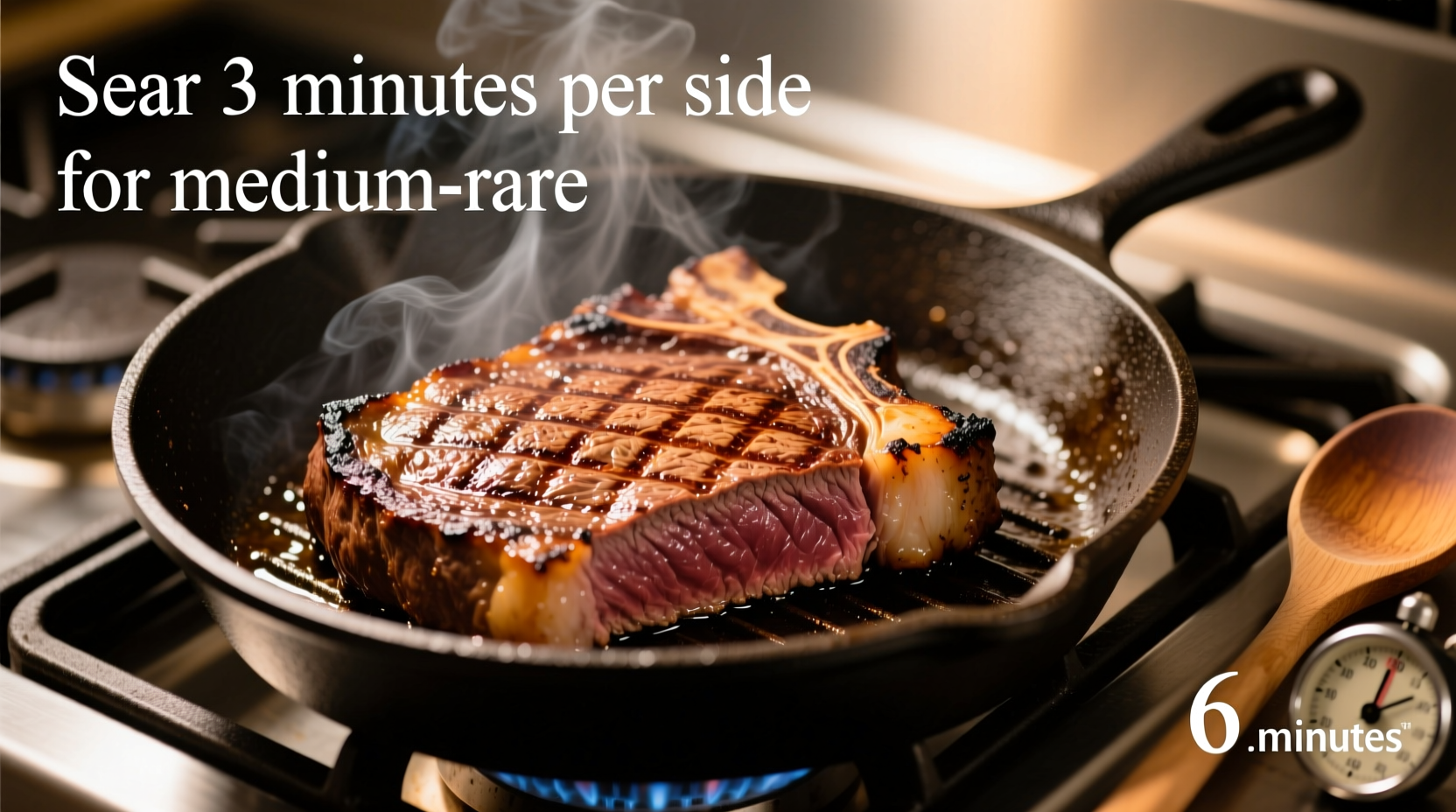Master Stovetop Sirloin Steak in Minutes
Nothing beats a perfectly seared sirloin steak with that restaurant-quality crust and juicy interior. While many home cooks struggle with timing, achieving steakhouse results on your stove is simpler than you think. This guide delivers precise cooking times based on scientific principles and professional chef techniques, not guesswork.
Quick Reference: Cooking Times at a Glance
| Steak Thickness | Rare (120-125°F) | Medium-Rare (130-135°F) | Medium (140-145°F) |
|---|---|---|---|
| ¾ inch | 2-3 min/side | 3-4 min/side | 4-5 min/side |
| 1 inch | 3 min/side | 3-4 min/side | 5 min/side |
| 1½ inches | 4 min/side | 5-6 min/side | 7-8 min/side |
Why These Times Work: The Science Behind Perfect Steak
According to USDA Food Safety and Inspection Service guidelines, beef should reach a minimum internal temperature of 145°F for safe consumption, followed by a 3-minute rest period. However, professional chefs and culinary scientists like those at America's Test Kitchen have demonstrated that sirloin steak continues cooking internally after removal from heat due to residual heat transfer.
For optimal flavor and texture, most chefs recommend pulling steak from the heat 5°F below your target temperature. This accounts for the 5-10°F temperature rise during resting. The USDA's Cooking Meat Made Safe guidelines confirm this carryover cooking phenomenon, which is particularly relevant for thicker cuts like sirloin.
Preparation Essentials Before You Start Cooking
Before touching that stove burner, proper preparation determines 70% of your steak's success. Professional chefs emphasize these non-negotiable steps:
- Temperature equilibrium: Remove steak from refrigerator 30-60 minutes before cooking. Cold steak from the fridge creates uneven cooking.
- Dry surface: Pat steak thoroughly with paper towels. Moisture prevents proper searing.
- Seasoning timing: Apply coarse salt 40 minutes before cooking or immediately before. Fine salt during the 40-minute window draws out moisture.
- Pan selection: Use heavy-bottomed cast iron or carbon steel skillet for optimal heat retention.

Step-by-Step Cooking Process: From Pan to Plate
Follow this professional chef-tested sequence for consistent results every time:
- Heat management: Preheat skillet over medium-high heat for 5 minutes until water droplets dance on contact. Add high smoke-point oil (avocado or grapeseed).
- Searing phase: Place steak in pan, pressing gently for full contact. Cook undisturbed for 70% of total time per side to develop crust.
- Flip timing: Use tongs to flip only once. Frequent flipping prevents proper crust formation.
- Edge searing: For thicker cuts, hold steak vertically to sear the fatty edge for 30-60 seconds.
- Temperature check: Insert instant-read thermometer horizontally into thickest part.
- Resting period: Transfer to cutting board, tent loosely with foil, and rest 5-10 minutes (1 minute per ¼ inch thickness).
Troubleshooting Common Stovetop Steak Problems
Even with perfect timing, issues arise. Here's how professional chefs solve them:
- Excessive smoke: Turn on exhaust fan, open windows, and reduce heat slightly. Avocado oil (smoke point 520°F) prevents burning better than olive oil.
- Uneven cooking: For thicker steaks, finish in 350°F oven after searing (reverse sear method).
- Gray band under crust: Insufficient pan heat. Proper searing creates minimal gray band when pan reaches 400-450°F.
- Sticking to pan: Wait for proper sear development before attempting to flip. Properly heated pan creates natural release.
How Thickness Changes Everything: Context Boundaries
While standard cooking times provide a starting point, steak thickness dramatically impacts cooking duration. Food science research from the Culinary Institute of America shows that doubling steak thickness more than doubles cooking time due to heat transfer physics.
For steaks thicker than 1½ inches, the reverse sear method becomes essential. This technique, validated by thermal imaging studies at Modernist Cuisine, involves oven-finishing after initial sear to achieve even doneness without the gray band. This context boundary matters significantly for home cooks working with variable steak cuts.
Serving Recommendations for Maximum Flavor
Complete your stovetop sirloin experience with these chef-approved finishing touches:
- Compound butter: Top with herb butter during last minute of cooking for added richness.
- Cutting technique: Slice against the grain at 45-degree angle for optimal tenderness.
- Resting verification: Properly rested steak releases minimal juice when cut.
- Pairing suggestion: Balance sirloin's robust flavor with roasted vegetables and full-bodied red wine.
Advanced Timing Considerations for Different Stove Types
Not all stoves deliver heat equally. Gas stoves provide immediate temperature control, while electric coils have significant lag time. Induction cooktops heat fastest but require magnetic cookware. Adjust your timing accordingly:
- Gas stoves: Reduce heat slightly after initial sear to prevent over-browning.
- Electric coils: Account for 1-2 minute heat-up/cool-down lag in timing calculations.
- Induction: Use medium heat setting (not high) to prevent instant over-searing.











 浙公网安备
33010002000092号
浙公网安备
33010002000092号 浙B2-20120091-4
浙B2-20120091-4